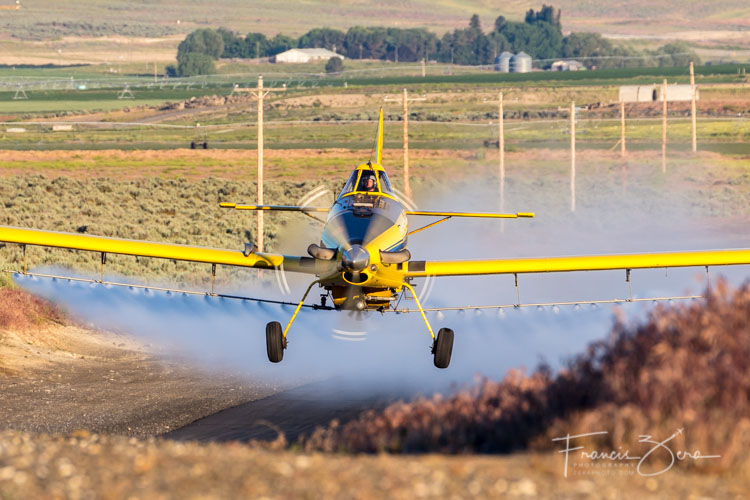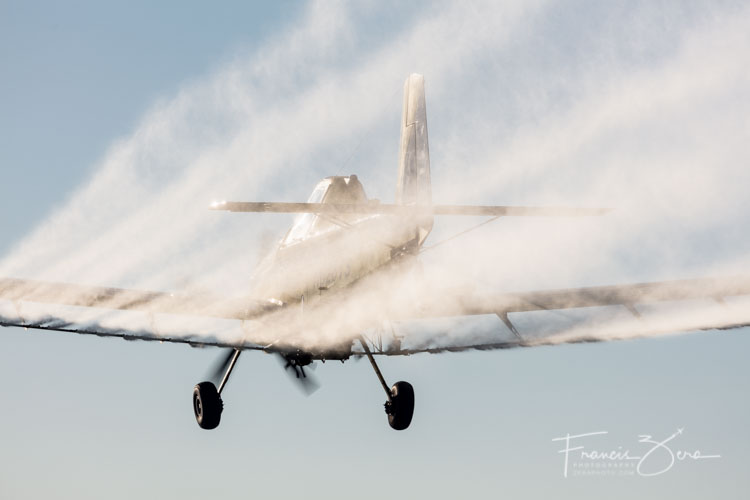
These guys know how to fly
Agriculture (ag) aviation is not the swashbuckling, seat-of-the-pants occupation that popular culture led me to expect. Sure, it’s definitely all about daring flying, but it’s also gone all high-tech, making use of 3-D obstacle mapping, computer-controlled spray nozzles, and precisely-defined GPS flight paths across the fields.
“I’m not just drilling holes in the sky going from point A to point B – I’m helping out, it’s a gratifying feeling,” said Gavin Morse, co-owner of GEM Air, an aerial spraying company based in Warden, Wash.

A GEM Air Air Tractor 602 in action, spraying a field in central Washington state
Morse said the term ‘crop duster’ is freighted with assumptions based on behaviors from a bygone era. He prefers to use either ‘ag aviation’ or ‘aerial spraying’ when referring to his line of work.
“People think of ag aviation as being a little crazy or a little wild, but that’s just not the case – the average aerial applicator is highly trained even before they’re flying,” Morse said. Pilots spend a long time, sometimes years, as loaders, mixing and loading the chemicals into the planes, along with helping to maintain the aircraft, and, of course, training to fly them.